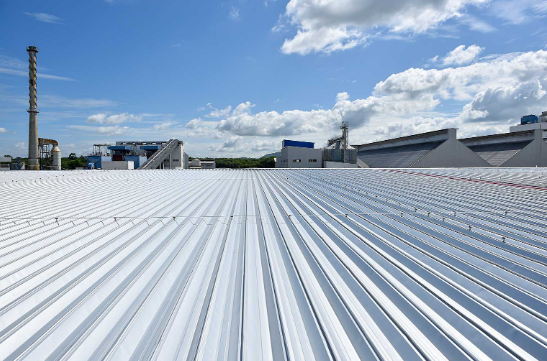Commercial buildings need roofing that is strong, long-lasting, and efficient. Metal roofing has grown in popularity because it offers many benefits beyond just covering a building. Architects and business owners are now choosing metal roofs not only for durability but also for the design flexibility and energy savings they bring.
In this article, we explore five architectural advantages of commercial metal roofing that make it a smart choice for modern buildings.
Durability and Longevity
One of the biggest advantages of commercial metal roofing is its durability. Metal roofs can withstand harsh weather conditions such as heavy rain, snow, and strong winds without getting damaged. Unlike traditional roofing materials, metal does not crack, warp, or rot over time.
This means commercial buildings can avoid frequent repairs and replacements, saving both money and effort in the long run. Architects often recommend metal roofing because it maintains its structure and appearance for decades, giving buildings a professional and well-maintained look.
Lightweight Design
Metal roofing is much lighter than other materials like concrete or clay tiles. This advantage makes it easier for architects and engineers to design structures without adding too much weight to the building frame. The lighter weight also reduces stress on the walls and foundation, which can increase the overall safety and stability of the building.
Additionally, lighter roofs can be installed faster, saving time during construction. This efficiency allows businesses to open their buildings sooner while still maintaining a strong and attractive roof.
Energy Efficiency
Commercial metal roofs are highly energy efficient. They reflect sunlight rather than absorbing it, which helps keep buildings cooler in hot weather. This reflective property can reduce the need for air conditioning, lowering energy costs and improving sustainability.
Architects appreciate this benefit because energy efficiency is a key aspect of modern building design. By choosing metal roofing, business owners can create comfortable interiors for employees and customers while also contributing to environmental conservation.
Versatility in Design
Metal roofing offers incredible design versatility. It comes in a variety of styles, colors, and finishes that can match almost any architectural vision. From sleek, modern commercial buildings to more traditional structures, metal roofs can enhance overall aesthetic appeal.
Architects can also use metal roofing to create unique shapes, angles, and patterns that are difficult to achieve with other materials. This flexibility allows businesses to stand out and leave a lasting impression on clients and visitors.
Low Maintenance and Sustainability
Another key advantage of metal roofing is its low maintenance. Unlike other materials that require regular cleaning, painting, or repairs, metal roofs stay strong with minimal care. They are also recyclable, making them an environmentally friendly choice.
Architects often highlight this feature because it adds value to a building while reducing long-term costs. Businesses can enjoy a roof that remains in excellent condition for decades, supporting both financial and environmental goals.
Conclusion
Commercial metal roofing offers a combination of durability, lightweight design, energy efficiency, design versatility, and low maintenance that makes it an excellent choice for modern buildings. Architects and business owners benefit from its long-lasting performance and visual appeal while also saving money and protecting the environment.
Choosing metal roofing is not just a practical decision—it is a smart architectural strategy that strengthens and beautifies commercial buildings for years to come.
